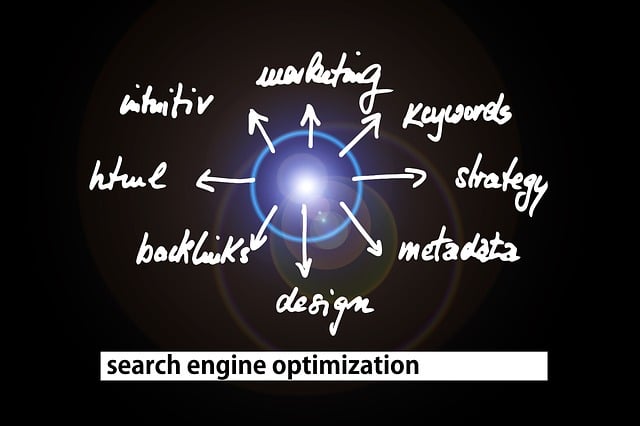Table of Contents
Understanding the Importance of Website Content Optimization
Website content optimization plays a crucial role in enhancing a website’s visibility and ranking on search engines. It encompasses various strategies and techniques aimed at improving the quality, relevance, and accessibility of the content on a website. By optimizing website content, businesses can attract more organic traffic, engage their target audience effectively, and ultimately drive conversions and achieve their marketing goals.
In today’s highly competitive digital landscape, where numerous websites vie for users’ attention, content optimization is imperative for standing out from the crowd. Search engines prioritize websites with well-optimized content, making it easier for users to discover them online. Additionally, optimized content not only boosts a website’s search engine ranking but also enhances the overall user experience, leading to increased credibility and trustworthiness among visitors.
Conducting Keyword Research for SEO Optimization
Keyword research forms the foundation of any successful SEO optimization strategy. By identifying the right keywords related to your niche and target audience, you can increase the visibility of your website on search engine result pages. Utilizing keyword research tools and analytics can provide valuable insights into search trends and user behavior, allowing you to optimize your content effectively. It is crucial to not only focus on high-volume keywords but also consider long-tail keywords and semantic variations to capture a wider range of search queries and drive organic traffic to your site.
Conducting thorough keyword research involves understanding the search intent behind users’ queries. By aligning your content with the intent behind specific keywords, you can enhance the relevance and authority of your website in the eyes of search engines. Additionally, conducting competitor analysis to identify the keywords driving traffic to similar websites can help you stay competitive and tailor your content strategy accordingly. By regularly revisiting and updating your list of targeted keywords based on changing trends and user behavior, you can adapt to the evolving landscape of search engine algorithms and ensure your website remains visible and accessible to your target audience.
Crafting Compelling Headlines and Meta Descriptions
Crafting compelling headlines and meta descriptions is a critical aspect of optimizing website content for both search engines and users. Headlines serve as the first point of contact with your audience, enticing them to click through and engage with your content. A well-crafted headline should be attention-grabbing, concise, and relevant to the topic at hand. It should offer a glimpse into the value of the content, sparking curiosity and encouraging readers to delve further.
Similarly, meta descriptions play a vital role in summarizing the content of a web page. They appear below the headline in search engine results and provide a brief overview of what users can expect upon clicking. A strong meta description should be persuasive, informative, and include relevant keywords to improve visibility in search results. By optimizing both headlines and meta descriptions, you can enhance the click-through rate and ultimately drive more traffic to your website.

Utilizing Relevant and High-Quality Images
The use of relevant and high-quality images on a website is crucial for capturing and maintaining the attention of visitors. Images can greatly enhance the overall aesthetics of a webpage and help break up long blocks of text, making the content more visually appealing and easier to digest. When selecting images for your website, it is essential to choose visuals that are directly related to the content and context of the page.
High-quality images can also contribute to improved user experience and engagement. Clear, sharp, and visually appealing images can evoke emotions and convey information more effectively than plain text alone. Additionally, incorporating relevant images can help strengthen the overall message of the content and make it more memorable to the audience. Remember to optimize images for web use to ensure fast loading times and seamless integration with your website’s design.
Implementing Internal and External Links Strategically
Internal and external links play a crucial role in enhancing the visibility and credibility of a website. When strategically implemented, these links can not only improve the user experience but also boost the site’s SEO performance. Internal links help in guiding users to relevant pages within the website, keeping them engaged and encouraging them to explore more content. On the other hand, external links to authoritative sources can establish the website’s credibility and improve its reputation as a reliable source of information.
Strategic placement of internal links within the content helps search engines understand the website’s structure and hierarchy, leading to better indexing and ranking. Likewise, incorporating relevant external links to reputable websites can signal to search engines the website’s association with reliable sources and bring in additional value to the content. By carefully choosing which pages to link internally and externally, website owners can create a well-connected digital ecosystem that benefits both users and search engine algorithms.
Creating Engaging and Informative Content
Crafting engaging and informative content is a fundamental aspect of successful digital marketing strategies. When creating content for a website, it is crucial to understand the target audience’s preferences, pain points, and interests. By conducting thorough research and utilizing language that resonates with the audience, content creators can effectively capture and maintain their attention.
Moreover, incorporating storytelling techniques into the content can evoke emotions and create a memorable experience for the readers. By weaving narratives that are relevant to the brand’s message and values, content becomes more relatable and engaging. Additionally, utilizing visual elements such as videos, infographics, and interactive media can further enhance the content’s appeal and increase user engagement. By focusing on creating content that is both informative and captivating, businesses can establish credibility, foster customer loyalty, and drive conversions effectively.
Optimizing for Readability and User Experience
When it comes to optimizing your website content for readability and user experience, it is essential to focus on making your content easily digestible for the audience. This involves structuring your content in a way that is visually appealing and easy to navigate. Utilizing short paragraphs, bullet points, and subheadings can help break up the text and make it more accessible to readers. Additionally, using clear and concise language will ensure that your message is conveyed effectively to the audience.
In order to enhance the overall user experience on your website, it is imperative to pay attention to the readability of your content. Choosing the right font size and style, as well as using sufficient spacing between lines and paragraphs, can greatly impact how users interact with your content. Moreover, incorporating visual elements such as images, videos, and infographics can further enhance the readability and engagement of your content. By prioritizing readability and user experience, you can create a more inviting and accessible environment for your audience to engage with your content.
Utilizing Header Tags for Organization and SEO
One of the fundamental aspects of optimizing website content for both organization and SEO purposes is the strategic implementation of header tags. These HTML tags, ranging from H1 to H6, play a crucial role in structuring your content hierarchically, making it easier for search engines to understand the relevance and structure of your webpage. When used correctly, header tags can help improve the overall user experience by guiding readers through the key sections of your content.
Proper utilization of header tags not only enhances the readability of your content but also signals to search engines the importance of different sections within your webpage. By incorporating relevant keywords into your header tags, you can further boost the SEO value of your content, increasing the likelihood of your website ranking higher in search engine results. When crafting your header tags, it is essential to maintain consistency in hierarchy and use them strategically to divide your content into digestible sections, ultimately enhancing both user experience and search engine visibility.
Incorporating Call-to-Actions for Conversions
One of the crucial elements in optimizing website content for conversions is the strategic incorporation of call-to-actions (CTAs). CTAs serve as valuable signposts guiding users towards the desired action, whether it be making a purchase, subscribing to a newsletter, or downloading a resource. Without clear and compelling CTAs, visitors may navigate away from a webpage without completing the intended goal. To maximize the effectiveness of CTAs, they should be prominent, action-oriented, and aligned with the overall goals of the website.
When creating CTAs, it is essential to consider both the placement and design to ensure they capture the attention of visitors. Placing CTAs strategically within the content flow or at the end of a webpage can encourage users to take the desired action. Additionally, using engaging language and visually appealing design can further entice visitors to click on the CTA. A well-crafted CTA should convey a sense of urgency or value proposition to prompt immediate action, ultimately driving conversions on the website.
Monitoring and Analyzing Website Traffic and Engagement
To gauge the effectiveness of your website and digital marketing strategies, it is paramount to regularly monitor and analyze your website traffic and user engagement metrics. By employing tools such as Google Analytics, you can gain valuable insights into the behavior of your site visitors, including the pages they frequent, the duration of their visits, and the actions they take. These metrics serve as quantitative indicators that can guide your decision-making process for optimizing content and user experience.
Furthermore, monitoring website traffic allows you to identify trends, patterns, and fluctuations in visitor behavior over time. By analyzing these fluctuations, you can ascertain which strategies are yielding positive results and which areas may require adjustments. This data-driven approach empowers you to make informed decisions on content creation, SEO optimization, and overall digital marketing tactics to enhance user engagement and drive meaningful conversions.
Updating and Refreshing Content Regularly
Refreshing and updating your website content regularly is crucial in maintaining its relevance and ensuring that it continues to meet the needs of your audience. By continuously reviewing and enhancing your content, you demonstrate to both users and search engines that your website is active and up-to-date. This proactive approach can also help improve your site’s ranking on search engine results pages, as search algorithms favor fresh and relevant content that provides value to users.
Moreover, regularly updating your content gives you the opportunity to incorporate new information, address any changes in your industry, and refine your messaging to align with current trends and best practices. By staying on top of updates and trends, you can ensure that your website remains competitive and resonates with your target audience. Additionally, fresh content can also attract repeat visitors, enhance user engagement, and foster a loyal following for your brand.
Mobile Optimization for Improved User Experience
With the increasing number of users accessing websites through their mobile devices, mobile optimization has become imperative for enhancing user experience. Ensuring that your website is mobile-friendly allows for smoother navigation, faster loading times, and overall better usability on smaller screens. By optimizing your website for mobile devices, you can cater to the needs of on-the-go users and provide them with a seamless browsing experience.
Responsive design is a key aspect of mobile optimization, as it allows your website to adapt to different screen sizes and resolutions. This ensures that your content is displayed correctly across various devices, eliminating the need for users to pinch, zoom, or scroll excessively. Additionally, optimizing your website for mobile can improve your search engine rankings, as search engines like Google prioritize mobile-friendly websites in their results. By investing in mobile optimization, you can stay ahead of the curve and meet the evolving needs of your audience.
Utilizing Social Media for Content Promotion
Social media platforms have become powerful tools for content promotion in the digital age. Leveraging social media to amplify the reach of your content can significantly enhance visibility and engagement. By strategically sharing your content across various social channels, you can tap into a broad audience base and drive traffic back to your website.
Engaging with your followers through meaningful conversations and responding to their comments can foster a sense of community around your brand. This interaction not only boosts brand loyalty but also encourages social sharing, expanding the reach of your content even further. Additionally, utilizing social media analytics to track the performance of your posts can provide valuable insights into what resonates with your audience, enabling you to refine your content promotion strategy for optimal results.
Implementing Schema Markup for Enhanced Search Visibility
Implementing schema markup is a crucial strategy for enhancing the visibility of your website in search results. Schema markup provides search engines with additional context about your content, enabling them to better understand the information on your site and display rich snippets in search results. By incorporating schema markup, you can improve your website’s chances of ranking higher and gaining more visibility to potential users searching for relevant information.
When implementing schema markup, it is essential to adhere to the recommended guidelines and use structured data markup that accurately reflects the content on your website. By providing search engines with clear and detailed information through schema markup, you can increase the likelihood of your content being displayed prominently in search results, making it more appealing to users and driving higher organic traffic to your website. Overall, investing time and effort into implementing schema markup can significantly boost your website’s search visibility and propel your online presence to new heights.
Testing and Tweaking Content for Continuous Improvement.
Continuous improvement is a fundamental aspect of any successful content strategy. Testing and tweaking content allows for refinement and enhancement based on real-time feedback and performance data. Through systematic analysis and iteration, content creators can adapt to the evolving needs and preferences of their target audience, ultimately enhancing engagement and driving conversions. This iterative process of testing and tweaking ensures that content remains relevant, impactful, and aligned with the overarching marketing objectives.
By leveraging tools such as A/B testing, user feedback, and performance metrics, content creators can make data-driven decisions to optimize the effectiveness of their content. Testing different variations of headlines, imagery, calls-to-action, and overall messaging provides valuable insights into what resonates best with the audience. Continuous tweaking based on these insights allows for continual refinement and enhancement of content performance, leading to improved results and sustained audience interest. Through a commitment to ongoing testing and tweaking, content creators can stay ahead of the curve and ensure that their content remains fresh, engaging, and impactful in a competitive digital landscape.


